- Home
- William Faulkner
The Essential Faulkner
The Essential Faulkner Read online
The Essential Faulkner is a work of fiction. Names, characters, places, and incidents either are the product of the author’s imagination or are used fictitiously. Any resemblance to actual persons, living or dead, events, or locales is entirely coincidental.
2012 Random House eBook Edition
Copyright © 1929, 1931, 1932, 1934, 1935, 1938, 1942, 1950, 1951 by William Faulkner
Copyright © 1931, 1939, 1940, 1946 by Random House, Inc.
Copyright © 1930, 1934, 1942 by The Curtis Publishing Company
Copyright renewed ©1956, 1957, 1958, 1959, 1961 by William Faulkner
Copyright renewed © 1958 by The Curtis Publishing Company
Copyright renewed © 1963, 1965, 1966 by Estelle Faulkner and Jill Faulkner Summers
Copyright © 1946, 1967 by The Viking Press, Inc.
All rights reserved.
Published in the United States by Random House, an imprint of The Random House Publishing Group, a division of Random House, Inc., New York.
RANDOM HOUSE and colophon are registered trademarks of Random House, Inc.
Originally published in the United States as The Portable Faulkner by Viking Press, a member of Penguin Group USA in 1946 and in the United Kingdom as The Essential Faulkner by Chatto & Windus, a member of the Random House Group, London in 1967.
An earlier version of Part III of the Introduction appeared in the Sewanee Review as part of an essay entitled “William Faulkner’s Legend of the South”
eISBN: 978-0-307-79959-3
www.atrandom.com
v3.1
CONTENTS
Cover
Title Page
Copyright
INTRODUCTION BY MALCOLM COWLEY
1. THE OLD PEOPLE
EDITOR’S NOTE
1820. A Justice
1833. The Courthouse (A Name for the City)
(FROM Requiem for a Nun)
18—. Red Leaves
1859. Was
(FROM Go Down, Moses)
2. THE UNVANQUISHED
EDITOR’S NOTE
1864. Raid
(FROM The Unvanquished)
1869. Wash
1874. An Odor of Verbena
(FROM The Unvanquished)
3. THE LAST WILDERNESS
EDITOR’S NOTE
1883. The Bear
(FROM Go Down, Moses)
4. THE PEASANTS
EDITOR’S NOTE
1908. Spotted Horses
(FROM The Hamlet)
5. THE END OF AN ORDER
EDITOR’S NOTE
1902. That Evening Sun
1918. Ad Astra
1924. A Rose for Emily
1928. Dilsey
(FROM The Sound and the Fury)
6. MISSISSIPPI FLOOD
EDITOR’S NOTE
1927. Old Man
(FROM The Wild Palms)
7. MODERN TIMES
EDITOR’S NOTE
1928. Death Drag
1929. Uncle Bud and the Three Madams
(FROM Sanctuary)
1930. Percy Grimm
(FROM Light in August)
1940. Delta Autumn
(FROM Go Down, Moses)
8. THE UNDYING PAST
EDITOR’S NOTE
1951. The Jail (Nor Even Yet Quite Relinquish —–)
(FROM Requiem for a Nun)
1699–1945. Appendix: The Compsons
1950. Address upon Receiving the Nobel Prize for Literature
BOOKS BY WILLIAM FAULKNER
INTRODUCTION
I wrote this introduction in the autumn of 1945, at a time when Faulkner’s books were little read and often disparaged. He had a few enthusiastic defenders, but no one, so it seemed to me then, had more than distantly suggested the scope and force and interdependence of his work as a whole. I was writing to overcome a general misconception, and that explains why, at various points, my emphasis was different from what it would be today. Yet I find it difficult to change what I said, except in the comparatively simple matter of bringing facts up to date. The original text was written with a good deal of advice from Faulkner himself. It has some historical value, and I prefer to reprint it with a very few revisions, while saving my comments for the end.
I
When the war was over—the other war—William Faulkner went back to Oxford, Mississippi. He had served in the Royal Air Force in 1918. Now he was home again and not at home, or at least not able to accept the post-war world. He was writing poems, most of them worthless, and dozens of immature but violent and effective stories, while at the same time he was brooding over his own situation and the decline of the South. Slowly the brooding thoughts arranged themselves into the whole interconnected pattern that would form the substance of his novels.
The pattern was based on what he saw in Oxford or remembered from his childhood; on scraps of family tradition (the Falkners, as they spelled the name, had played their part in the history of the state); on kitchen dialogues between the black cook and her amiable husband; on Saturday-afternoon gossip in Courthouse Square; on stories told by men in overalls squatting on their heels while they passed around a fruit jar full of white corn liquor; on all the sources familiar to a small-town Mississippi boy—but the whole of it was elaborated, transformed, given convulsive life by his emotions; until by simple intensity of feeling the figures in it became a little more than human, became heroic or diabolical, became symbols of the old South, of war and reconstruction, of commerce and machinery destroying the standards of the past. There in Oxford, Faulkner performed a labor of imagination that has not been equaled in our time, and a double labor: first, to invent a Mississippi county that was like a mythical kingdom, but was complete and living in all its details; second, to make his story of Yoknapatawpha County stand as a parable or legend of all the Deep South.
For this double task, Faulkner was better equipped by talent and background than he was by schooling. He was born in New Albany, Mississippi, on September 25, 1897; he was the oldest of four brothers. The family soon moved to Oxford, where he attended the public school, but without being graduated from high school. For a year or two after the war, he was a student at the University of Mississippi, where veterans could then matriculate without a high-school diploma, but he neglected his classroom work and left early in the second year. He had less of a formal education than any other good writer of his time, except Hart Crane—less even than Hemingway, who never went to college, but who learned to speak several languages and studied writing in Paris from the best masters. Faulkner taught himself, largely, as he says, by “undirected and uncorrelated reading.”
Among the authors either mentioned or echoed in his early stories and poems are Keats, Balzac, Flaubert, Swinburne, Verlaine, Mallarmé, Wilde, Housman, Joyce, Eliot, Sherwood Anderson, and E. E. Cummings, with fainter suggestions of Hemingway (looking at trout in a river), Dos Passos (in the spelling of compound words), and Scott Fitzgerald. The poems he wrote in those days were wholly derivative, but his prose from the beginning was a form of poetry, and in spite of the echoes it was always his own. He traveled less than any of his writing contemporaries. There was a lonely year spent in New York as salesclerk in a bookstore; there were six months in New Orleans, where he lived near Sherwood Anderson and met the literary crowd—he even satirized them in a bad early novel, Mosquitoes—and then six months in Italy and Paris, where he did not make friends on the Left Bank. Except for writing assignments in Hollywood, the rest of his life has been spent in the town where he grew up, less than forty miles from his birthplace.
Although Oxford, Mississippi, is the seat of a university, it is even less of a literary center than was Salem, Massachusetts, during Hawthorne’s early years
as a writer; and Faulkner himself has shown an even greater dislike than Hawthorne for literary society. His novels are the books of a man who broods about literature, but doesn’t often discuss it with his friends; there is no ease about them, no feeling that they come from a background of taste refined by argument and of opinions held in common. They make me think of a passage from Henry James’s little book on Hawthorne:
The best things come, as a general thing, from the talents that are members of a group; every man works better when he has companions working in the same line, and yielding to the stimulus of suggestion, comparison, emulation. Great things of course have been done by solitary workers; but they have usually been done with double the pains they would have cost if they had been produced in more genial circumstances. The solitary worker loses the profit of example and discussion; he is apt to make awkward experiments; he is in the nature of the case more or less of an empiric. The empiric may, as I say, be treated by the world as an expert; but the drawbacks and discomforts of empiricism remain to him, and are in fact increased by the suspicion that is mingled with his gratitude, of a want in the public taste of a sense of the proportion of things.
Like Hawthorne, Faulkner is a solitary worker by choice, and he has done great things not only with double the pains to himself that they might have cost if produced in more genial circumstances, but sometimes also with double the pains to the reader. Two or three of his books as a whole and many of them in part are awkward experiments. All of them are full of overblown words like “imponderable,” “immortal,” “immutable,” and “immemorial” that he would have used with more discretion, or not at all, if he had followed Hemingway’s example and served an apprenticeship to an older writer. He is a most uncertain judge of his own work, and he has no reason to believe that the world’s judgment of it is any more to be trusted; indeed, there is no American author who would be justified in feeling more suspicion of “a want in the public taste of a sense of the proportion of things.” His early novels, when not condemned, were overpraised for the wrong reasons; his later and in many ways better novels have been ridiculed or simply neglected; and in 1945 all his seventeen books were effectively out of print, with some of them unobtainable in the secondhand bookshops.1
Even his warm admirers, of whom there are many—no author has a higher standing among his fellow novelists—have shown a rather vague idea of what he is trying to do; and Faulkner himself has never explained. He holds a curious attitude toward the public that appears to be lofty indifference (as in the one preface he wrote, for the Modern Library edition of Sanctuary), but really comes closer to being a mixture of skittery distrust and pure unconsciousness that the public exists. He doesn’t furnish information or correct misstatements about himself (most of the biographical sketches that deal with him are full of preposterous errors). He doesn’t care which way his name is spelled in the records, with or without the “u”—“Either way suits me,” he says. Once he has finished a book, he is apparently not concerned with the question of how it will be presented, to what sort of audience, and sometimes he doesn’t bother to keep a private copy of it. He said in a letter, “I think I have written a lot and sent it off to print before I actually realized strangers might read it.” Others might say that Faulkner, at least in those early days, was not so much composing stories for the public as telling them to himself—like a lonely child in his imaginary world, but also like a writer of genius.
II
Faulkner’s mythical kingdom is a county in northern Mississippi, on the border between the sand hills covered with scrubby pine and the black earth of the river bottoms. Except for the storekeepers, mechanics, and professional men who live in Jefferson, the county seat, all the inhabitants are farmers or woodsmen. Except for a little lumber, their only commercial product is baled cotton for the Memphis market. A few of them live in big plantation houses, the relics of another age, and more of them in substantial wooden farmhouses; but still more of them are tenants, no better housed than slaves on good plantations before the Civil War. Yoknapatawpha County—“William Faulkner, sole owner and proprietor,” as he inscribed on one of the maps he drew—has a population of 15,611 persons scattered over 2400 square miles. It sometimes seems to me that every house or hovel has been described in one of Faulkner’s novels, and that all the people of the imaginary county, black and white, townsmen, farmers, and housewives, have played their parts in one connected story.
He has so far [1945] written nine books wholly concerned with Yoknapatawpha County and its people, who also appear in parts of three others and in thirty or more uncollected stories. Sartoris was the first of the books to be published, in the spring of 1929; it is a romantic and partly unconvincing novel, but with many fine scenes in it, such as the hero’s visit to a family of independent pinehill farmers; and it states most of the themes that the author would later develop at length. The Sound and the Fury, published six months later, recounts the going-to-pieces of the Compson family, and it was the first of Faulkner’s novels to be widely discussed. The books that followed, in the Yoknapatawpha series, are As I Lay Dying (1930), about the death and burial of Addie Bundren; Sanctuary (1931), for a long time the most popular of his novels; Light in August (1932), in some ways the best; Absalom, Absalom! (1936), about Colonel Sutpen and his ambition to found a family; The Unvanquished (1938), a cycle of stories about the Sartoris dynasty; The Wild Palms (1939), half of which deals with a convict from back in the pine hills; The Hamlet (1940), a first novel about the Snopes clan, with others to follow; and Go Down, Moses (1942), in which Faulkner’s principal theme is the relation between whites and Negroes. There are also many Yoknapatawpha stories in These 13 (1931) and Doctor Martino (1934), besides other stories privately printed (like Miss Zilphia Gant, 1932) or published in magazines and still to be collected or used as episodes in novels.2
Just as Balzac, who may have inspired the series, divided his Comédie Humaine into “Scenes of Parisian Life,” “Scenes of Provincial Life,” “Scenes of Private Life,” so Faulkner might divide his work into a number of cycles: one about the planters and their descendants, one about the townspeople of Jefferson, one about the poor whites, one about the Indians, and one about the Negroes. Or again, if he adopted a division by families, there would be the Compson-Sartoris saga, the continuing Snopes saga, the McCaslin saga, dealing with the white and black descendants of Carothers McCaslin, and the Ratliff-Bundren saga, devoted to the backwoods farmers of Frenchman’s Bend. All the cycles or sagas are closely interconnected; it is as if each new book was a chord or segment of a total situation always existing in the author’s mind. Sometimes a short story is the sequel to an earlier novel. For example, we read in Sartoris that Byron Snopes stole a packet of letters from Narcissa Benbow; and in “There Was a Queen,” a story published five years later, we learn how Narcissa got the letters back again. Sometimes, on the other hand, a novel contains the sequel to a story; and we discover from an incidental reference in The Sound and the Fury that the Negro woman whose terror of death was portrayed in “That Evening Sun” had indeed been murdered and her body left in a ditch for the vultures. Sometimes an episode has a more complicated history. Thus, in the first chapter of Sanctuary, we hear about the Old Frenchman place, a ruined mansion near which the people of the neighborhood had been “digging with secret and sporadic optimism for gold which the builder was reputed to have buried somewhere about the place when Grant came through the country on his Vicksburg campaign.” Later this digging for gold served as the subject of a story published in the Saturday Evening Post: “Lizards in Jamshyd’s Courtyard.” Still later the story was completely rewritten and became the last chapter of The Hamlet.3
As one book leads into another, the author sometimes falls into inconsistencies of detail. There is a sewing-machine agent named V. K. Suratt who appears in Sartoris and some of the stories written at about the same time. When we reach The Hamlet, his name has changed to Ratliff, although his character remains the same (and
his age, too, for all the twenty years that separate the backgrounds of the two novels). Henry Armstid is a likable figure in As I Lay Dying and Light in August; in The Hamlet he is mean and half-demented. His wife, whose character remains consistent, is called Lula in one book and Martha in another; in the third she is nameless. There is an Indian chief named Doom who appears in several stories; he starts as the father of Issetibeha (in “Red Leaves”) and ends as his nephew (in “A Justice”). The mansion called Sutpen’s Hundred was built of brick at the beginning of Absalom, Absalom! but at the end of the novel it is all wood and inflammable except for the chimneys. But these errors are inconsequential, considering the scope of Faulkner’s series; and I should judge that most of them are afterthoughts rather than oversights.
All his books in the Yoknapatawpha cycle are part of the same living pattern. It is this pattern, and not the printed volumes in which part of it is recorded, that is Faulkner’s real achievement. Its existence helps to explain one feature of his work: that each novel, each long or short story, seems to reveal more than it states explicitly and to have a subject bigger than itself. All the separate works are like blocks of marble from the same quarry: they show the veins and faults of the mother rock. Or else—to use a rather strained figure—they are like wooden planks that were cut, not from a log, but from a still living tree. The planks are planed and chiseled into their final shapes, but the tree itself heals over the wound and continues to grow. Faulkner is incapable of telling the same story twice without adding new details. In the present volume I wanted to use part of The Sound and the Fury, the novel that deals with the fall of the Compson family. I thought that the last part of the book would be most effective as a separate episode, but still it depended too much on what had gone before. Faulkner offered to write a very brief introduction that would explain the relations of the characters. What he finally sent me is the much longer passage printed at the end of the volume: a genealogy of the Compsons from their first arrival in America. Whereas the novel is confined (except for memories) to a period of eighteen years ending on Easter Sunday, 1928, the genealogy goes back to the battle of Culloden in 1745, and forward to the year 1943, when Jason, last of the Compson males, has sold the family mansion, and Sister Caddy has last been heard of as the mistress of a German general. The novel that Faulkner wrote about the Compsons had long ago been given what seemed its final shape, but the pattern or body of legend behind the novel—and behind his other books—was still developing.

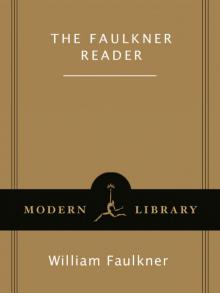 Faulkner Reader
Faulkner Reader Collected Stories
Collected Stories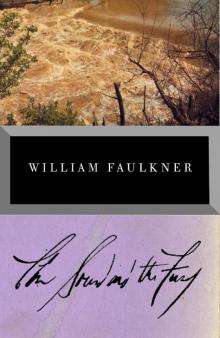 The Sound and the Fury
The Sound and the Fury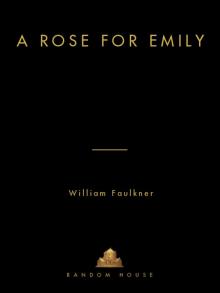 A Rose for Emily and Other Stories
A Rose for Emily and Other Stories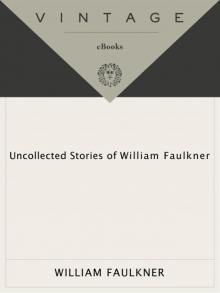 Uncollected Stories of William Faulkner
Uncollected Stories of William Faulkner The Wishing Tree
The Wishing Tree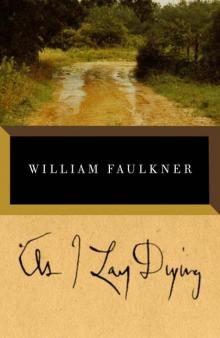 As I Lay Dying
As I Lay Dying The Unvanquished
The Unvanquished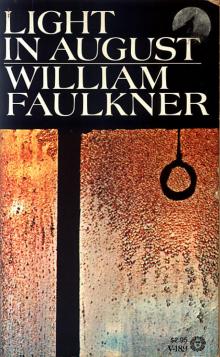 Light in August
Light in August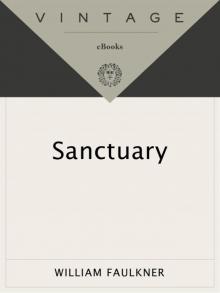 Sanctuary
Sanctuary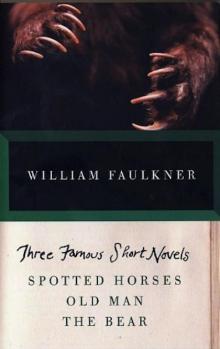 Three Famous Short Novels: Spotted Horses Old Man The Bear (Vintage)
Three Famous Short Novels: Spotted Horses Old Man The Bear (Vintage)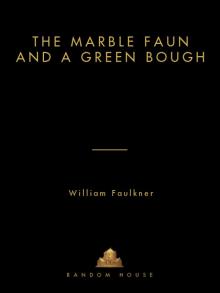 The Marble Faun and a Green Bough
The Marble Faun and a Green Bough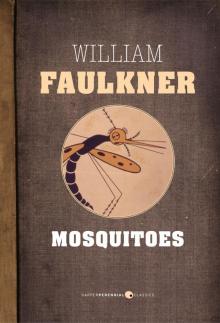 Mosquitoes
Mosquitoes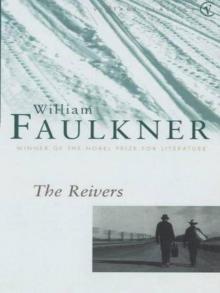 The Reivers
The Reivers Father Abraham
Father Abraham![The Wild Palms: [If I Forget Thee, Jerusalem] Read online](http://i1.bookreadfree.com/01/the_wild_palms_[if_i_forget_thee_jerusalem]_preview.jpg) The Wild Palms: [If I Forget Thee, Jerusalem]
The Wild Palms: [If I Forget Thee, Jerusalem] Go Down, Moses
Go Down, Moses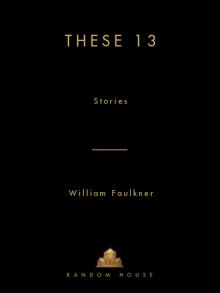 These 13 (1931)
These 13 (1931)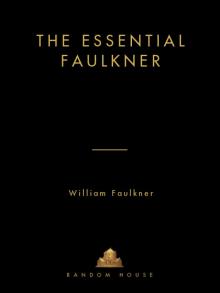 The Essential Faulkner
The Essential Faulkner Snopes: The Hamlet, the Town, the Mansion
Snopes: The Hamlet, the Town, the Mansion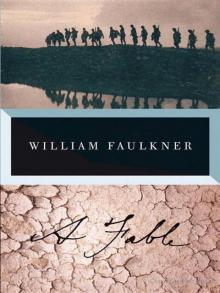 A Fable
A Fable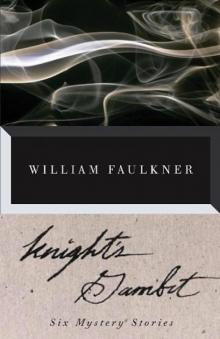 Knight's Gambit
Knight's Gambit Requiem for a Nun
Requiem for a Nun Essays, Speeches & Public Letters
Essays, Speeches & Public Letters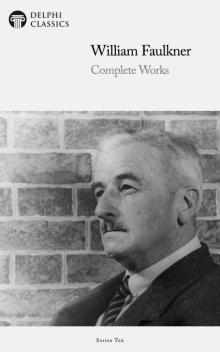 Complete Works of William Faulkner
Complete Works of William Faulkner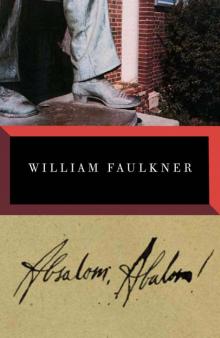 Absalom, Absalom!
Absalom, Absalom!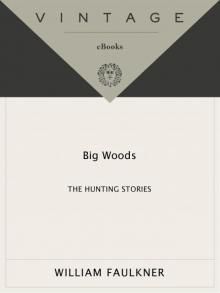 Big Woods: The Hunting Stories
Big Woods: The Hunting Stories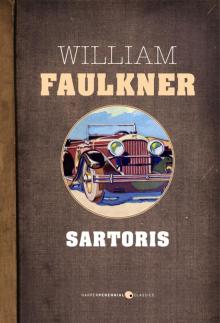 Sartoris
Sartoris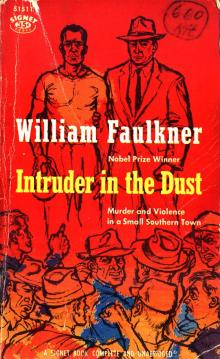 Intruder in the Dust
Intruder in the Dust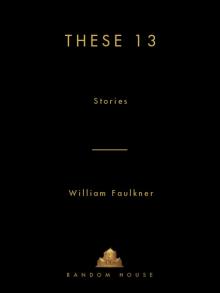 These 13
These 13 Knight's Gambit (Vintage)
Knight's Gambit (Vintage) Marble Faun & Green Bough
Marble Faun & Green Bough Unvanquished
Unvanquished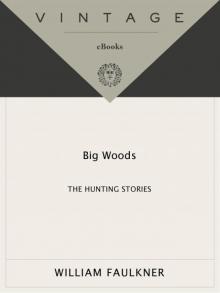 Big Woods
Big Woods